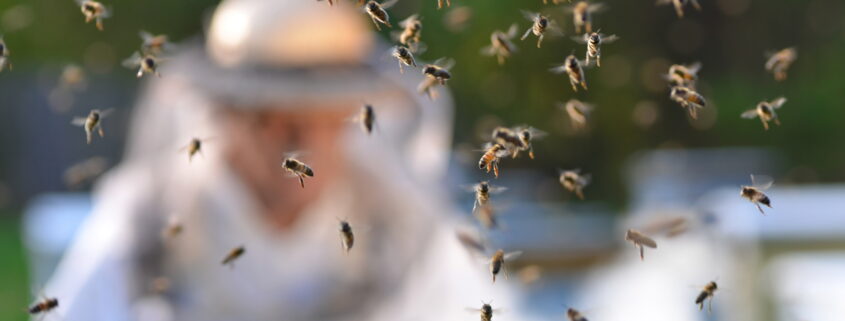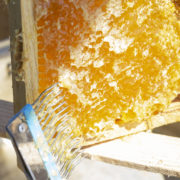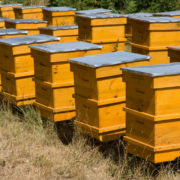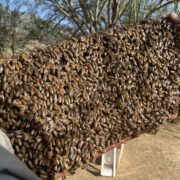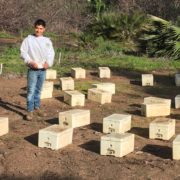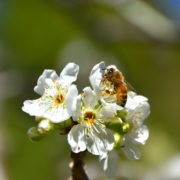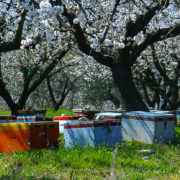The Relationship Between the Beekeeper and the Bees
The history of beekeeping is closely tied with humanity’s love of honey and people’s desire to produce as much of this delicious food as possible. People have been keeping bees since ancient times, almost always with the purpose of harvesting honey or other bee products for human consumption.
The relationship between the beekeeper and the bees, throughout history, has been largely an exploitative one, sadly often leading to the demise of the beehive. For example, before the invention of the Langstroth hive in 1851 with its removable frames, harvesting honey meant destroying the entire hive of bees.
The invention of the Langstroth hive in many ways led to birth of modern beekeeping. By utilizing this new equipment, which allowed for removal of the frames of honey without destroying the beehive, beekeepers became incentivized to learn how to manage a colony of honeybees over the long term. Instead of providing a single honey harvest, a managed colony could provide multiple harvests of honey over years—theoretically indefinitely.
This led to a focus on how to keep bees healthy and strong for the long run, which to this day continues. It has also led to a closer relationship between the beekeeper and the bees. Beekeepers in the twenty-first century, as opposed to early generations of beekeepers, are less abusive toward the bees and act more like attentive stewards, carefully managing and caring for their bees.
Today, this level of care is critical for the well-being of honeybees. With current-day adversities such as mites, parasites, pesticides, climate change, etc., honeybees face a world that is much more challenging than in the past. They need help.
This dynamic has led to relationship now where the beekeeper is almost a key part of the colony itself. A beehive greatly benefits from a caring beekeeper that provides it with timely feeding, nourishment, supplements, medications, protection against robbing, ants, beetles, etc., and other adversities.
At Wildflower Meadows, we like to think of our beekeepers as liaisons or concierges between the bee world and the human world. Most people in the outside world have no idea how to relate to bees, and the bees have little or no way to relate to people. The beekeeper bridges this gap by taking care of the bees so that they can live in a human-dominated world—and, by doing so, enables bees to deliver the benefits of pollination and food production that humans so greatly need.

